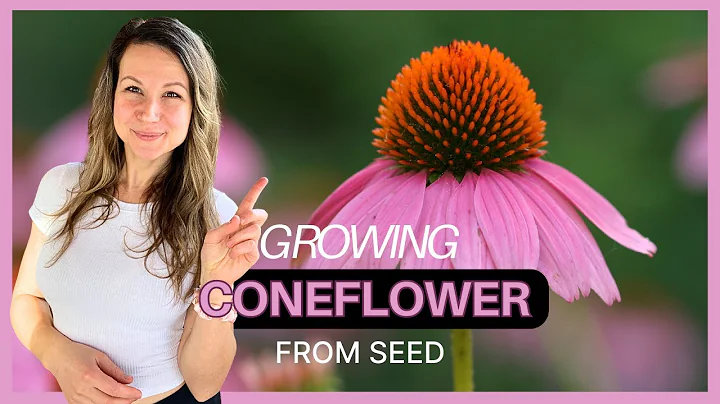Unlocking Seed Dormancy: A Guide to Cold Stratifying Native Plant Seeds
Table of Contents:
- Introduction
- What is Cold Stratification?
- The Benefits of Cold Stratification
- Understanding Local Ecotypes
- How to Cold Stratify Native Plant Seeds
- Step-by-Step Guide to Cold Stratification
- Seed Selection and Preparation
- Tips for Successful Cold Stratification
- Plants That Benefit from Cold Stratification
- Conclusion
Article:
🌱 Introduction
Welcome to my guide on cold stratifying native plant seeds! In this article, I will walk you through the process of cold stratification, its benefits, and how to successfully implement it. Cold stratification is a method that mimics the natural process of breaking seed dormancy, allowing them to germinate and grow. By following this technique, you can enhance the germination rate and overall success of your native plant seeds. So, let's dive in and learn more about this fascinating process!
🌿 What is Cold Stratification?
Cold stratification refers to the process of exposing seeds to a period of cold and moist conditions, which stimulate their natural germination process. In nature, many plant species have evolved a dormancy mechanism that prevents their seeds from germinating under unfavorable conditions. Cold stratification, therefore, provides these seeds with a simulated winter experience, fooling them into thinking it's time to break dormancy and start germinating.
💡 The Benefits of Cold Stratification
Cold stratification offers several benefits for native plant seeds. Here are a few reasons why you should consider implementing this technique:
-
Increased Germination Rate: Cold stratification breaks seed dormancy and enhances the germination rate of native plant species. This means more successful seedlings and a higher chance of establishing thriving plants.
-
Adaptation to Local Environments: By practicing cold stratification with locally sourced seeds, known as local ecotypes, you ensure that the resulting plants are well-adapted to the specific conditions in your area. These native plants possess the genetic makeup that allows them to thrive in their native habitats.
-
Early Growth Advantage: Cold stratification gives plants a head start in their growth cycle. By subjecting the seeds to a simulated winter period, they will be ready to germinate and establish a strong root system when spring arrives. This can lead to bigger, healthier plants and earlier blooms.
-
Conservation of Native Plant Species: Growing native plants from seeds helps conserve local biodiversity. By supporting local seed suppliers who collect seeds from private and public lands, you contribute to the preservation of native plant species and their unique genetic makeup.
🌍 Understanding Local Ecotypes
Local ecotypes, also known as local eco-type plants, refer to plant species that are sourced from specific regions and are well-adapted to the local environment. Nurseries that specialize in native plants often collect seeds from these regions and use them to grow plants suitable for their customers. The genetic diversity found in local ecotypes allows these plants to thrive in their native habitats, making them resilient to local climate and environmental conditions.
Using local ecotype seeds in your cold stratification process ensures that the resulting plants possess the genetic characteristics necessary for survival in your specific area. This can increase their resilience, disease resistance, and overall ability to cope with the local climate. So, whenever possible, opt for local ecotype seeds to support native plant conservation and achieve the best results in your garden.
🌡️ How to Cold Stratify Native Plant Seeds
Now that you understand the concept of cold stratification and its benefits, let's dive into the step-by-step process of cold stratifying native plant seeds. Here's a comprehensive guide to help you get started:
Step 1: Seed Selection and Preparation
To begin the cold stratification process, select the native plant seeds you wish to stratify. It's essential to choose healthy, mature seeds from reputable suppliers or collect them ethically from private or public lands. Make sure the seeds are suitable for your climate and growing conditions.
Before stratifying, some seeds may require scarification or soaking to break their hard seed coat and enhance germination. Follow the specific instructions provided for each plant species to ensure successful stratification.
Step 2: Seed Stratification Method
There are various cold stratification methods you can use, including using the refrigerator, freezer, or outdoor winter conditions. In this guide, we'll focus on the refrigerator method, which is the most accessible and reliable for home gardeners.
Step 3: Preparing the Cold Stratification Medium
You'll need a moist medium to simulate the cold and damp conditions necessary for seed stratification. Coffee filters make excellent inexpensive mediums. Moisten the coffee filter slightly, ensuring it is damp but not soaking wet. This will provide the necessary moisture for seed germination without causing rot or mold.
Step 4: Seed Placement and Storage
Place the moistened coffee filter on a plate and carefully spread the seeds evenly on top. Fold the coffee filter over the seeds, creating a packet. Write the plant name, date, and stratification duration on a quart-sized freezer bag. Then, gently slide the folded coffee filter packet into the labeled bag, ensuring it is sealed properly.
Step 5: Refrigeration and Freezing
For seeds that require 30 days of stratification, transfer the bag to your refrigerator and leave it there for 24 hours. After that, move the bag into your freezer and let it stay there for a minimum of 12 hours. Finally, return the bag to the refrigerator for another 24 hours. Repeat this cycle for about seven to ten days to complete the recommended stratification period.
Step 6: Seed Germination
Once the required stratification period is over, remove the bag from the refrigerator. The seeds are now ready to be sown in a suitable growing medium according to their specific requirements. Follow the individual planting instructions for each plant species to maximize germination success.
🌸 Tips for Successful Cold Stratification
To ensure successful cold stratification, keep the following tips in mind:
- Properly label and date all seed packets to avoid confusion.
- Choose a suitable medium, such as moistened coffee filters or sterile potting mix.
- Follow the recommended stratification duration for each plant species.
- Maintain the desired temperature and moisture levels throughout the stratification process.
- Regularly check for signs of mold, rot, or seedling emergence during the stratification period.
- If using the freezer method, avoid excessively long periods to prevent seed damage.
- Use locally sourced seeds (local ecotypes) whenever possible for better adaptation to your environment.
By following these tips, you'll increase the chances of successful seed stratification and ultimately achieve a thriving garden filled with beautiful native plants.
🌻 Plants That Benefit from Cold Stratification
Numerous plant species can benefit from cold stratification. Here are a few examples of plants commonly stratified:
-
Lanceleaf Coreopsis: Lanceleaf coreopsis (Coreopsis lanceolata) is a sunny, colorful plant that attracts pollinators, especially bees. Stratifying its seeds helps break dormancy and ensures a higher germination rate.
-
Rose Milkweed: Also known as swamp milkweed (Asclepias incarnata), rose milkweed is highly attractive to pollinators, particularly monarch butterflies. Its seeds require stratification for successful germination.
-
Shorts Aster: Shorts aster (Symphyotrichum shortii) is a versatile plant that adds pops of color to your garden. By stratifying its seeds, you encourage germination and establish healthy plants.
-
Pearly Everlasting: Pearly everlasting (Anaphalis spp.) is a beautiful perennial with silvery-blue hairy leaves. Stratifying its seeds enhances germination and promotes the growth of these stunning plants.
-
Indigos: Both dwarf blue indigo (Baptisia australis var. minor) and large yellow wild indigo (Baptisia tinctoria) benefit from cold stratification. These nitrogen-fixing plants promote soil health and add beauty to any landscape.
By cold stratifying the seeds of these plants, you'll ensure better germination rates, stronger growth, and ultimately, a more successful garden filled with native beauty.
🌿 Conclusion
Cold stratification is a valuable technique for enhancing the germination and success of native plant seeds. By mimicking the natural conditions that break seed dormancy, you can increase germination rates, promote healthy growth, and support local biodiversity. Remember to select suitable seeds, follow the recommended stratification durations, and use locally sourced seeds whenever possible. With patience and care, your garden will flourish with vibrant native plants, creating a haven for pollinators and wildlife.
If you have any questions or need further clarification on cold stratification, feel free to leave a comment below. Happy gardening!
Highlights:
- Cold stratification, the process of breaking seed dormancy, enhances germination rates and promotes healthy plant growth 🌱
- Local ecotypes, plants sourced from specific regions, are genetically adapted to local environments, increasing their resilience and success 🌍
- By following a step-by-step guide, you can successfully cold stratify native plant seeds and create a thriving garden 🌿
- Cold stratification benefits include increased germination rates, early growth advantage, and conservation of native plant species 💡
- Lanceleaf coreopsis, rose milkweed, shorts aster, pearly everlasting, and indigos are among the plant species that benefit from cold stratification 🌻







